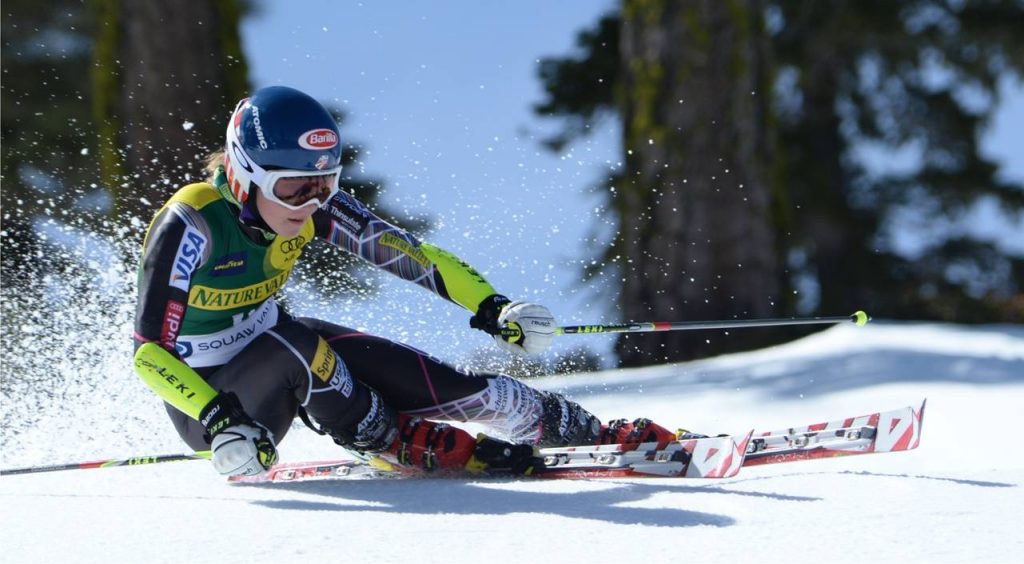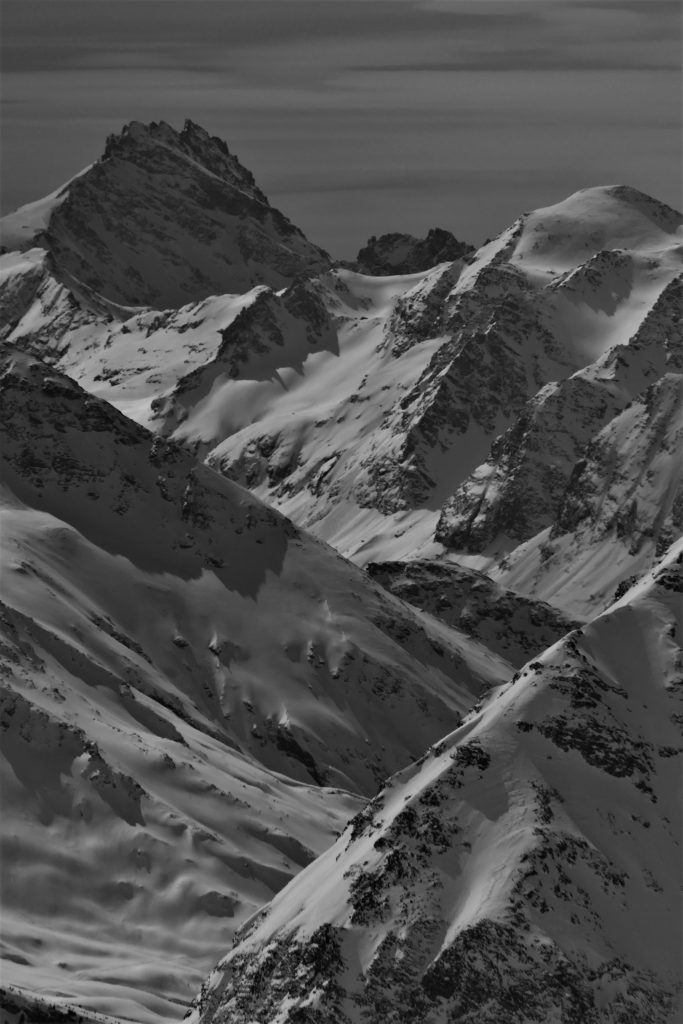Today there were two technical objectives – angulation and pivot. On top of this the goal was also to enable skiing on steeper terrain, use this terrain and travel a bit in the process – hopefully building confidence while expanding horizons.
The reality however is that “angulation” and “pivot” are difficult!
The video clip shows improved angulation and hence control of upper body rotation – compared to yesterday. The body still rotates too much in the shorter turns which limits control on the steep. My own video is included beneath to show how relatively still the body is during shorter turns – in this case pivoting both directions on one ski.
Angulation
Strong angulation looks like the following – it’s the angle made at the hip joint.

Adductors on both legs have to be engaged and the outside hip (in the turn) pulled slightly back – which permits flexion. This slightly counter rotates the pelvis to the turn direction – but the shoulders continue to follow the skis.
In shorter turns this gives the illusion that the pelvis is always facing downhill and is static – but it is only achieved through an active counter rotation. It’s not necessary to counter rotate until after the new turn starts – the first half of the turn can just be the ski coming around – pelvis facing downhill – allowing a skating posture against the uphill ski. When the ski comes below the skier then the active pelvic counter rotation prevents the hip being pulled ahead.
We experimented with “Chi Walking” to clarify how the hip moving ahead in either walking, running, cycling or skiing causes trouble.

Pivot
Pivoting is a braking form of skiing with the skis always on their uphill edges. The pure pivot is carried out from a sideslipping action combined with controlling the dynamics due to gravity with support from a ski pole. Full explanation of the pivot is found on the fixed page with the demo videos. “Pivot“




